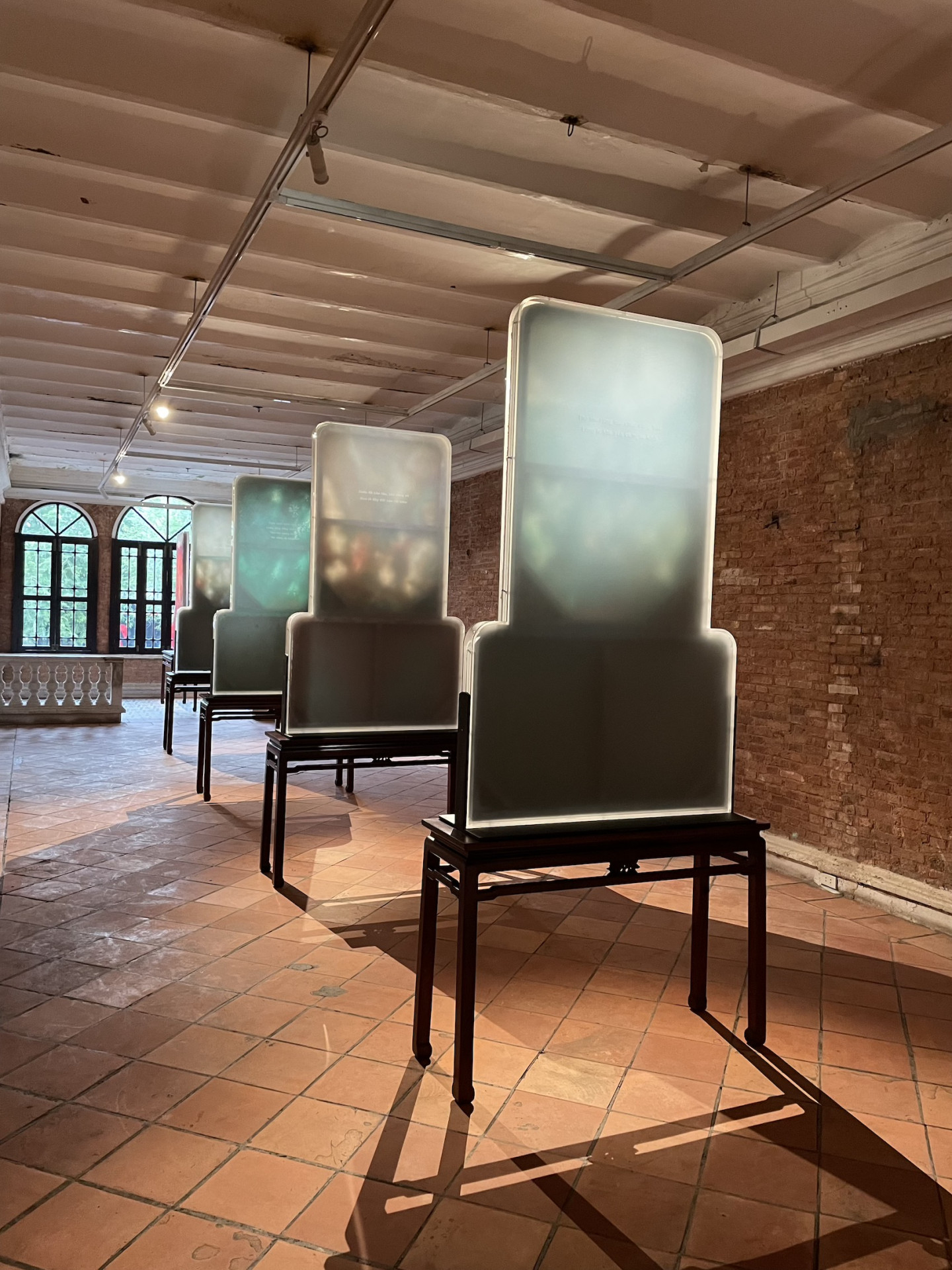Ha Manh Thang has the ability to lure viewers into a dreamworld similar to Tu Thuc's tale. With sixteen landscape paintings, he pierced my heart with a sense of abstruse melancholy — like a portrait of a beloved, now far away.
Born in 1980, Thai Nguyen, Vietnam, Thang belongs to the generation which grew up during the Renovation Period. Soon after his first solo exhibition at the age of 25, Thang’s career quickly skyrocketed, making him one of the leading artists in Vietnam.
So, what makes the work of a seemingly introverted artist from the Northern rural region so attractive? In my opinion, it is not the technical, contextual, or qualitative factors that we often find in the works of Rothko, Chong-hyun, Richter, or even Mehretu; his paintings vary so drastically from the paintings of any Vietnamese artist that I know.
Thang paints his “emotional state of mind,” as he told me in a conversation.
In the midst of an uncertain and ever-changing world, Thang dives into the deep, learning about himself through centuries-old antiquities, ancient verses, Buddhist philosophy, and Zen poetry. There are glimpses of ancient Chinese poetry and nature mixed with instrumental music. In his new work, he abandons previous motifs, figures, and sketches. Instead, with the absence of definition, time and space are now blended, creating the intangible, expanding the viewer’s imagination. In the evening hours in his studio, Thang studies the colors of the day’s end, only then does he truly feel himself, and paints the world like his own portraits.
It's a very difficult task to talk about just one work in this series of Kìa non non, nước nước, mây mây. I feel like a little boy who is overwhelmingly lost in the middle of a candy store (who wouldn't be tempted by the sweetness, even though we know that there may be hidden bitter tastes?). The painting titled Infinite Solitude has the beauty of eternal melancholy—like a Spring which passes, leaving only fallen peach petals, or the aftermath of a passionate love. As the seasons change, there is no beauty that does not fade and there is no entity that lasts forever. We are just one small element manufactured by creation. In Ha Manh Thang's works, poetry and paintings have no boundaries, just as humanity and nature arise and cease in the same world.
For over twenty years, Galerie Quynh has been an important and powerful art space in Vietnam. It is where the best contemporary artists exhibit and perform their most recent works. For this 5th exhibition of Ha Manh Thang hosted by the gallery, Ms Quynh mentioned that the show will be held in a unique building that bears many historical marks of Saigon. The building was built in 1889 by the Nattukottai Chettiars family and the Indian community who lived in Ton That Thiep Street neighborhood since the late 19th century. This serene place has been a witness of the tumultuous history of Saigon. When Thang came across this historical relic, he was instantly captivated by the tangent of space and time of this building. He knew this was where he could exhibit his Kìa non non, nước nước, mây mây series, aided by the timeless element the space offers.
So what will the talented but introverted artist bring to this new playground?
For an artist of any medium they work in, emotion, feelings, and talent are essential combinations that create masterpieces. Ha Manh Thang was constantly on journeys, and when he was out of the comfort of his familiar spaces and environment, he found who he truly is and what belonged to him in this impermanent world. There were times when he realized the meaninglessness and anonymity of the human existence, how we are just small grains of sand flying in the middle of the air, disappearing into the wonders. And in a place far away from home, a beautiful bond between nature and poetry was conceived in him. In that moment time seemed to have stopped, as if the space he inhabited had been there for many lifetimes — this bond is visualized throughout his series, Kìa non non, nước nước, mây mây.
Ocean Vuong, a poet whose cohesive writing style that Thang and I both admire, once confided that he was never sure of what he was doing, that he didn't want to nail down specifics, but rather wanted to create a space for his reader’s curiosity and wonder. Vuong, notes that when you let go of yourself in the middle of old forests, deep rivers or wild mountain peaks, you'll be cleansed and restored and free, able to find yourself. In this regard, I think both Ha Manh Thang and Ocean Vuong share similar courage.
Another person that reminds me of Thang is Peter Schjeldahl, the late witty art critic/writer of 1990’s The Village Voice (I truly miss him as I write these lines). He has mentioned that people believe genius is complicated. The opposite is true. We are complicated because we are often caught in our love/hate conflicts, and lack of focus because we lack confidence. Genius possesses a more minimalistic and effective way of operating. For example, when Picasso created, he painted only simple subjects, but each of his brush strokes was unique.
With Kìa non non, nước nước, mây mây, Ha Manh Thang gives the viewer a chance to find themselves in it: so great and also so humble; peaceful waves among the angry sea; magnificent and feeble, kindness and evil; loneliness and crowds. So, how do you see yourself in Thang's paintings? Find a calm lake and reflect on yourself like him.
Indeed, it is not an easy task.
Brian Doan
Los Angeles – Hanoi, 2022


